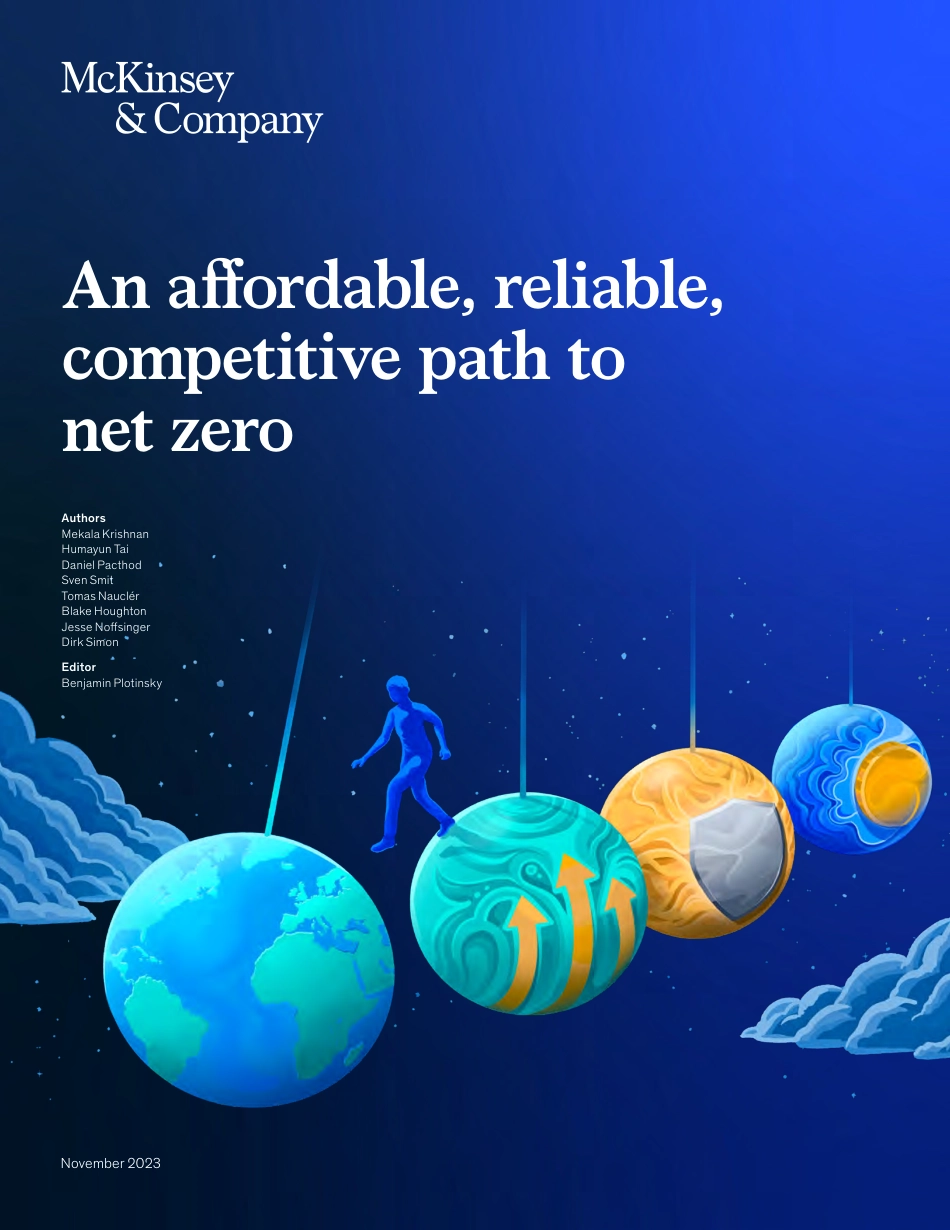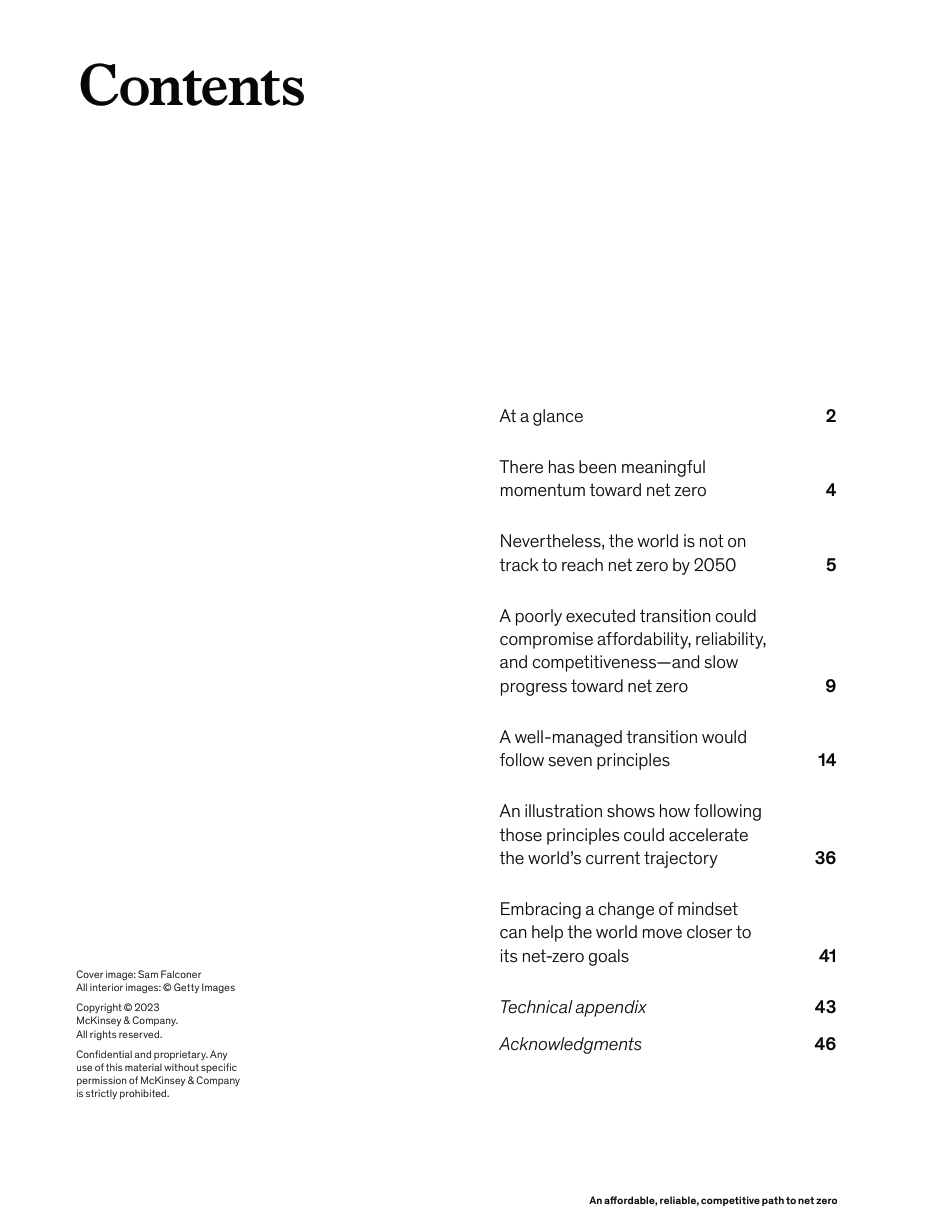An affordable, reliable, competitive path to net zeroNovember 2023AuthorsMekala KrishnanHumayun TaiDaniel PacthodSven SmitTomas NauclérBlake HoughtonJesse NoffsingerDirk SimonEditorBenjamin PlotinskyContentsAt a glance 2There has been meaningful momentum toward net zero 4Nevertheless, the world is not on track to reach net zero by 2050 5A poorly executed transition could compromise affordability, reliability, and competitiveness—and slow progress toward net zero 9A well-managed transition would follow seven principles 14An illustration shows how following those principles could accelerate the world’s current trajectory 36Embracing a change of mindset can help the world move closer to its net-zero goals 41Technical appendix 43Acknowledgments 46Cover image: Sam Falconer All interior images: © Getty ImagesCopyright © 2023 McKinsey & Company. All rights reserved.Confidential and proprietary. Any use of this material without specific permission of McKinsey & Company is strictly prohibited.An affordable, reliable, competitive path to net zero — Though there has been meaningful momentum, the world is not on track to achieve the goal enshrined in the Paris Agreement of limiting warming to well below 2°C or ideally 1.5°C. To meet that goal, countries and companies have committed to reaching net-zero emissions of CO2 and reducing emissions of other greenhouse gases. But there has not been enough progress. The share of primary energy produced by renewable sources, for example, has risen slowly, from 8 percent in 2010 to 12 percent in 2021. If emissions stay on their current trajectory, estimates from various sources suggest, net zero would not arrive even by the end of the century. — A successful net-zero transition wil...



